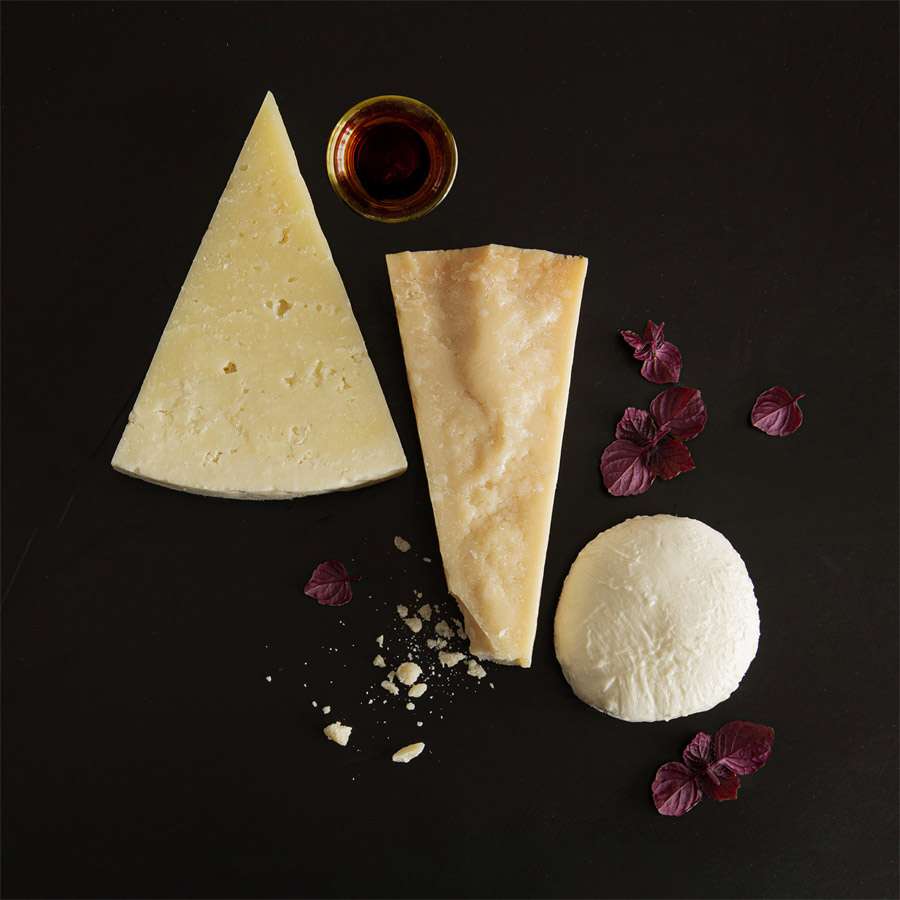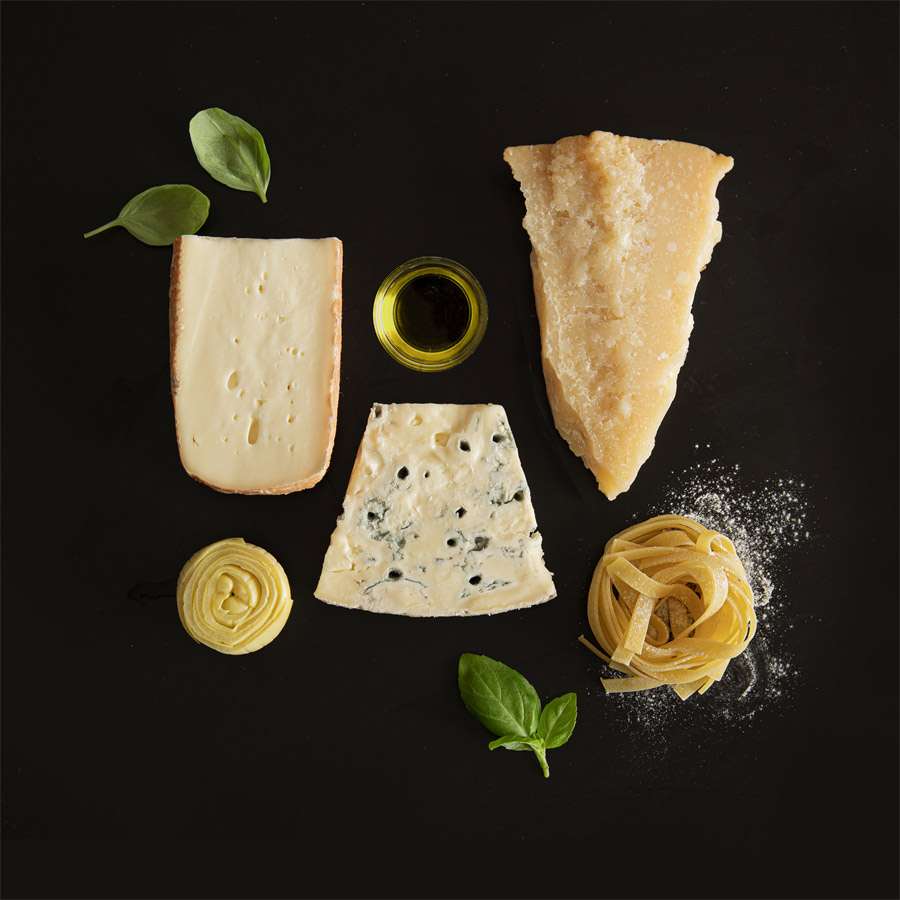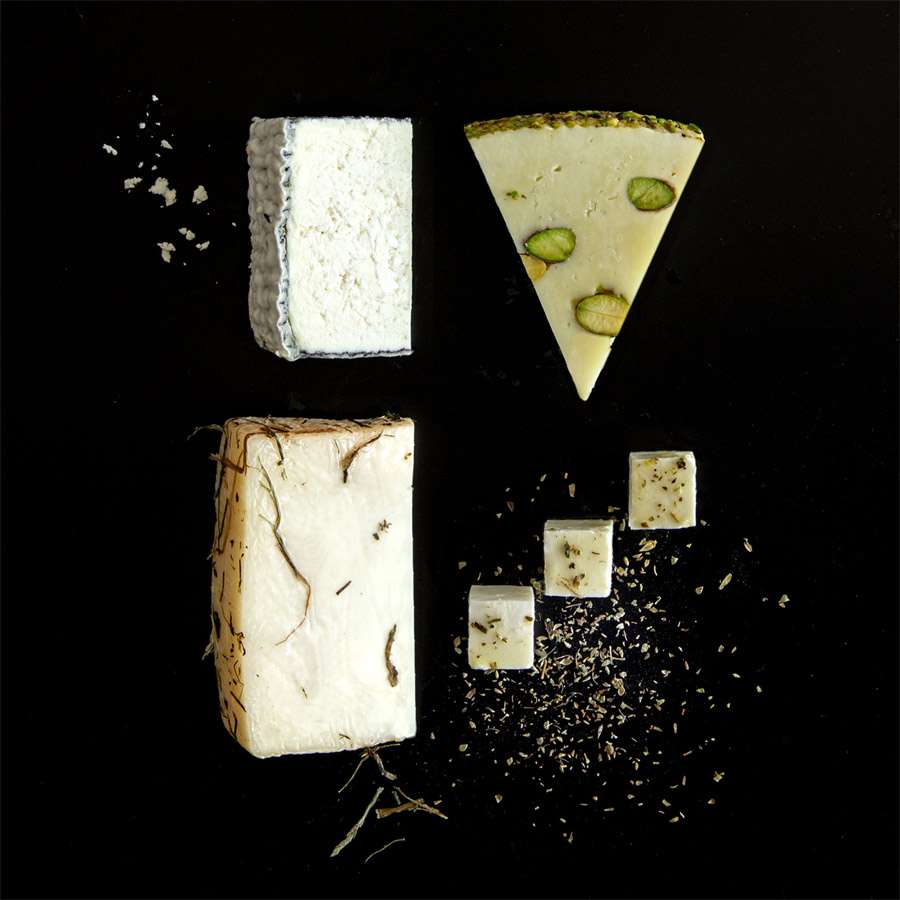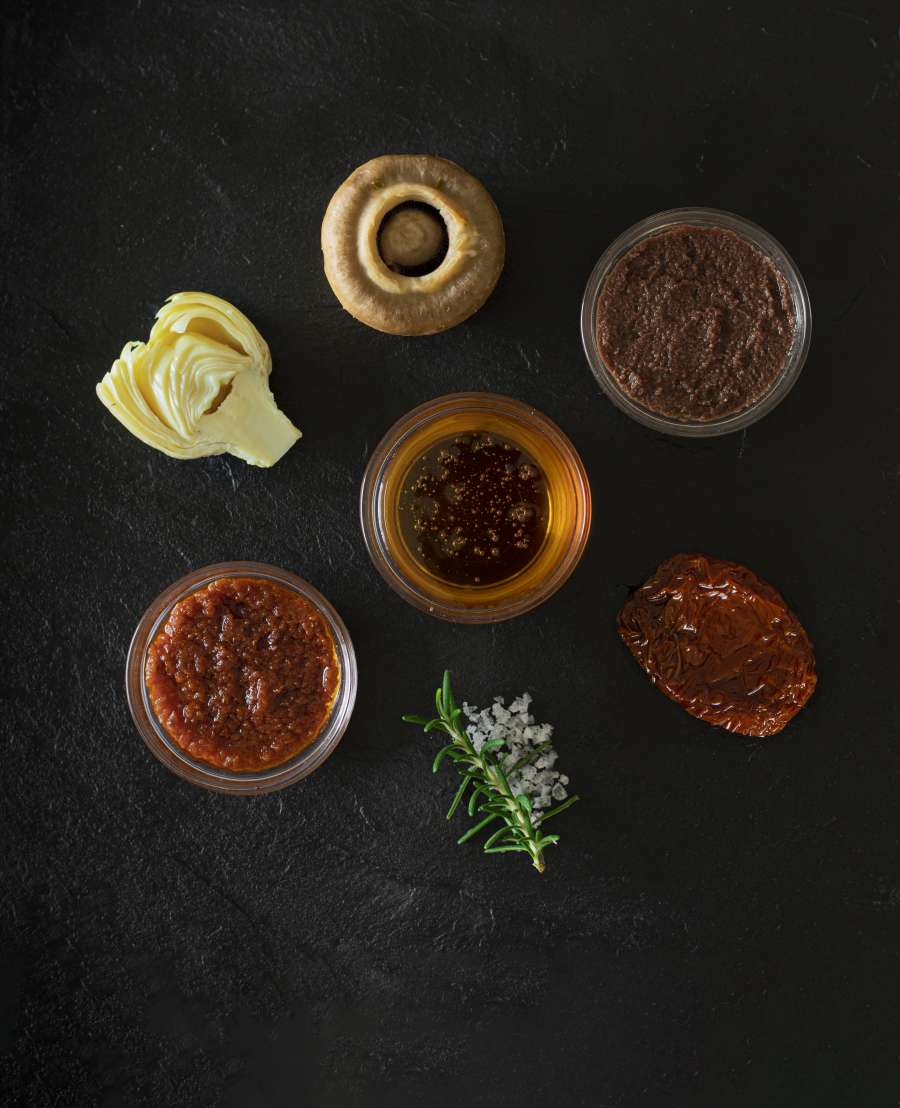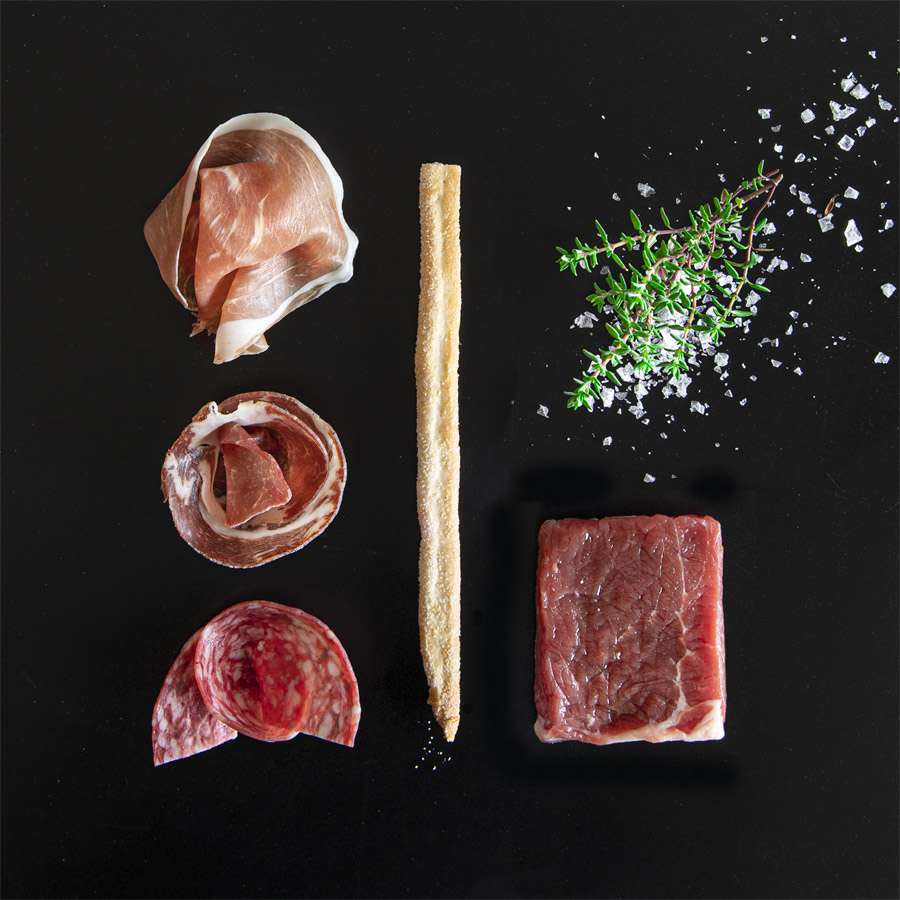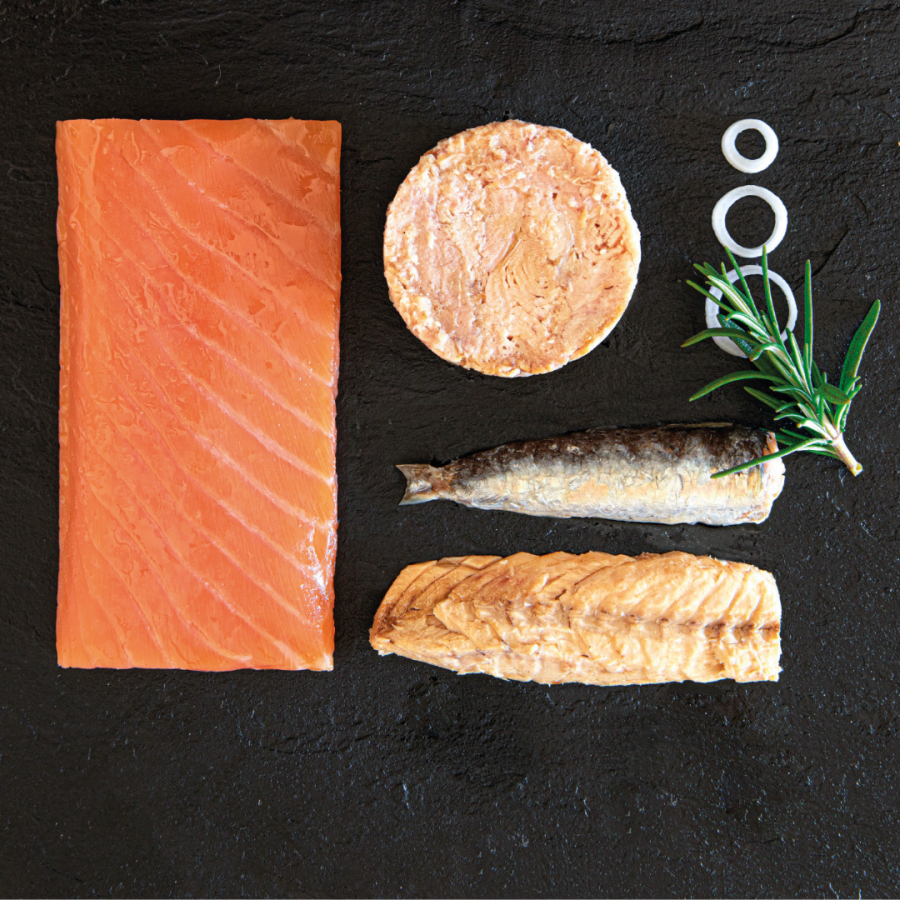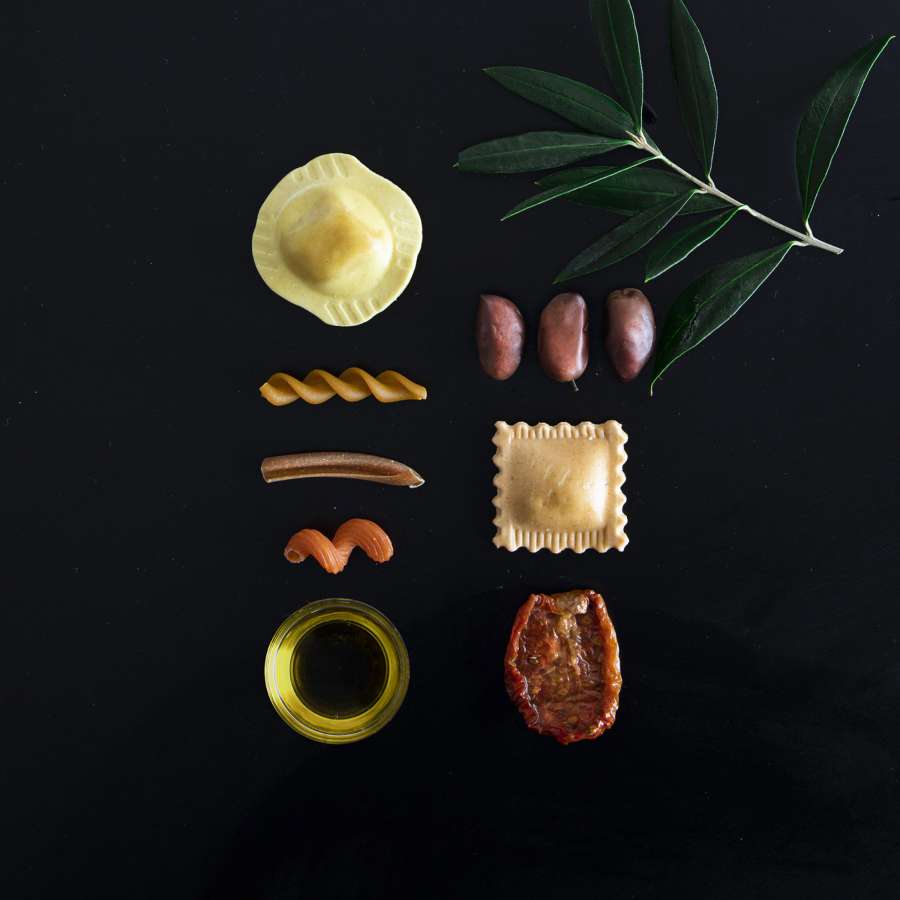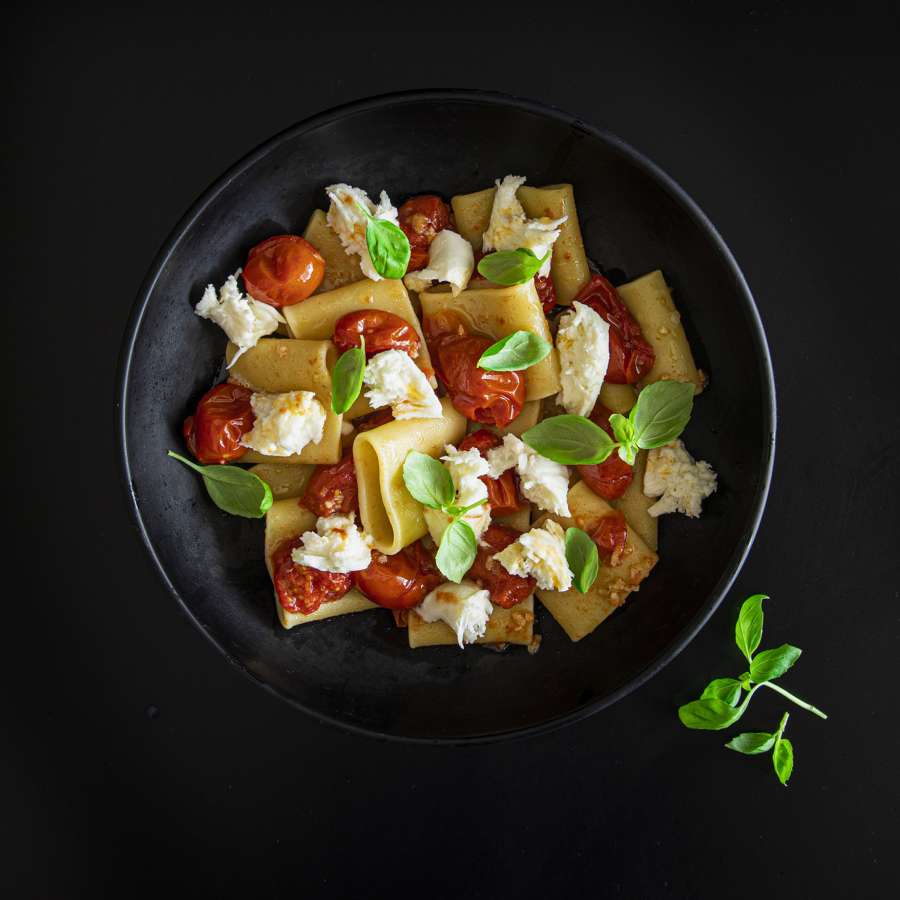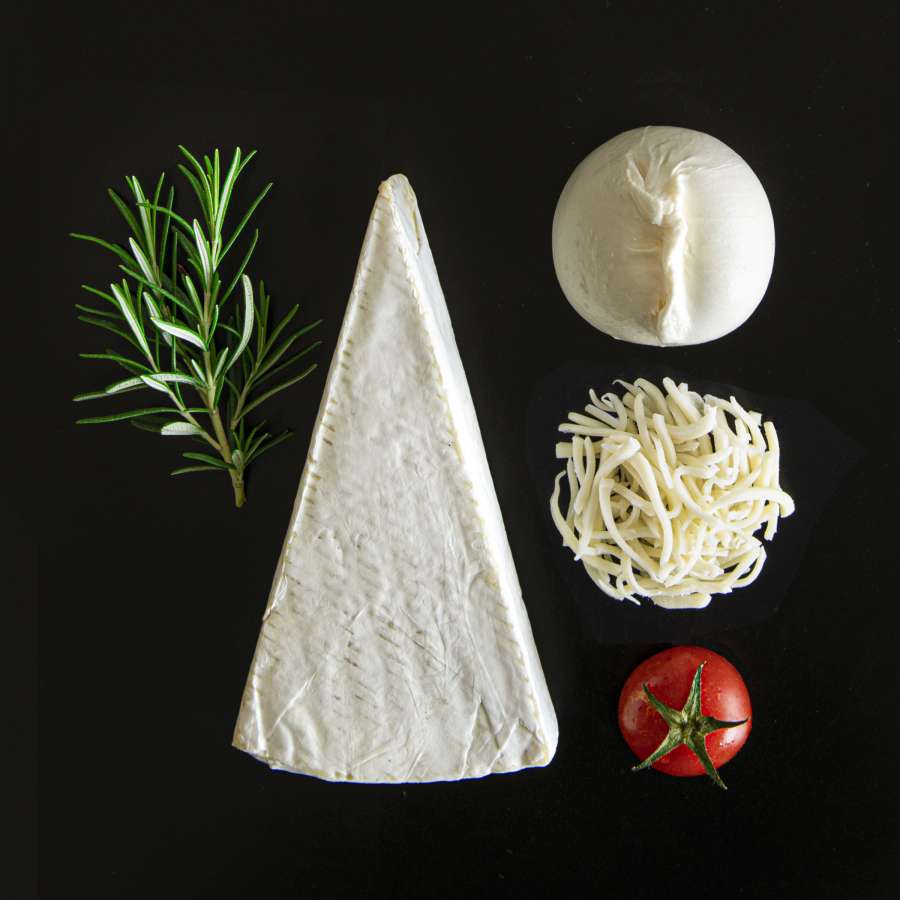An Italian cheese board is much more than a simple selection of dairy products; it's a culinary experience that celebrates the richness and diversity of our country's gastronomic heritage. Whether for an informal aperitif, an elegant dinner, or a moment of pure indulgence, composing a cheese board requires attention and care to best enhance the organoleptic properties of each cheese.
You can choose to create a classic cheese board, offering a wide range of flavors and textures, or dare to create a themed cheese board, an original and fun way to explore specific nuances and tell a story through taste. A fascinating example is the "hay-themed" cheese board, which takes us back in time, celebrating the ancient cheesemaking tradition linked to this natural resource. Hay, in fact, is not just a decorative element: it plays a fundamental role both in the diet of the animals that produce the milk and in the aging of the cheeses themselves, imparting distinctive aromas and flavors.
The Concept of "Hay" in Italian Cheese
The term "sottofieno" (under hay) describes an aging process where cheese fully matures surrounded by hay or straw. This natural wrapping serves not only for preservation but is vital for the development of the cheese's distinctive profile, acting as a natural incubator of flavor and aroma. Organic hay, obtained from natural and aromatic grass, gives the cheese a characteristic aroma of sun-dried grass. This ancient practice also allowed cheesemakers to hide and protect their goods.
Furthermore, hay is a crucial element in the diet of dairy cows, especially those whose milk is destined for iconic cheeses like Parmigiano Reggiano, directly influencing the quality and characteristics of the milk.
Choosing "Hay-Themed" Cheeses
For a cheese board that celebrates hay, you can select 3-5 types of cheeses that have a direct connection to this resource. Here are some suggestions:
Caciottona di Capra al fieno BIO: From the Belluno hills, this cheese is made with organic goat's milk and aged with organic hay for at least 60 days, acquiring a characteristic aroma of sun-dried grass.
Pecorino Sottofieno Collezione: A Tuscan classic, aged for several months wrapped in fragrant spring hay from mountain pastures and straw. This process gives the cheese typical aromas and authentic natural flavors, with a straw-yellow color and an intense scent of freshly cut hay. It ages for a minimum of 2 months. It received a Silver Medal at the World Cheese Awards 2024.
Pecorino paglia e fieno: A semi-aged Pecorino from Tuscany, ripened in its rind with straw and hay in a "ziro" (terracotta container). This traditional method imparts a fresh and intensely vegetal aroma, reminiscent of freshly cut grass and summer mowing, with a delicate and harmonious taste. The aging period is 60 days.
Grana Padano Selezione Fieno 50 Months: This DOP cheese is unique for the cows' diet, based on the use of meadow hay, rich in vegetables, which gives the milk an unmistakable flavor found in the cheese. Its long aging of 50 months develops an intense and complex structure and flavor.
Selvatico – Caciotta affinata al fieno di montagna: A hard cow's milk cheese, obtained from animals fed exclusively with forage from the area of origin. After aging for at least 70 days, it is wrapped in organic hay and rosemary and aged for another 2 months in oak barrels, developing a deep aroma and a firm consistency.
Cheeses made with "Latte Fieno STG": Latte Fieno (or "Heumilch") is STG (Guaranteed Traditional Speciality) certified by the European Union. It comes from farms where cows feed exclusively on fresh grass, legumes, cereals, and dry forage like hay and straw, with the absolute exclusion of fermented feeds (silage) and GMOs. This preserves the milk's original microbial flora, which is fundamental for cheesemaking and organoleptic characteristics. An example is Ferrari Bio's Organic Parmigiano Reggiano, which complies with organic, Parmigiano Reggiano, and Latte Fieno regulations.
Valsasnat: An original stracchino from Valsassina, produced with raw mountain milk from Alpine Brown cows that feed on local grass and hay.
Rules for Composing and Presenting the Cheese Board
To best enhance the organoleptic properties of the cheeses and create a pleasant tasting experience, follow these guidelines:
Tasting path: Arrange the cheeses in a sensory journey that goes from the most delicate and fresh to the most intense and aged. A clockwise path is intuitive and requires no special instructions. You could start with a cheese like Valsasnat (stracchino, 2 months of aging), then Caciottona di Capra al fieno BIO (60 days), Pecorino Sottofieno (minimum 2 months), Pecorino paglia e fieno (60 days), Selvatico – Caciotta affinata al fieno di montagna (70 days + 2 months), and conclude with Grana Padano Selezione Fieno 50 Months (50 months) or Organic Parmigiano Reggiano.
Serving temperature: Cheeses should be served at room temperature, so that their aromas and flavors can fully express themselves.
Portioning and cutting: Prepare small portions suitable for tasting by hand or with appropriate utensils. For a refined touch, cut the cheeses in a way that best represents their characteristics: medium-intensity cheeses (like Caciottona) into triangles, more aged cheeses (like Grana Padano or Parmigiano Reggiano) into flakes, and fresh cheeses (like Valsasnat) sliced.
Appropriate knives: If serving whole pieces, provide the right knives: an arched knife for soft cheeses, a knife with a high handle for hard cheeses, and an almond-shaped knife for flaking cheeses like Grana Padano or Parmigiano. It is preferable to have one knife per type of cheese to avoid mixing flavors.
Pairings: Accompany the cheeses with ingredients that enhance their flavor without overpowering it.
Bread: Slices of fresh bread or croutons.
Fruit: Fresh fruit with soft cheeses and dried fruit (like walnuts) with hard ones. Valsasnat is ideal with walnuts or dried fruit.
Honey and jams/preserves: Honey and jams pair well with very aromatic and aged cheeses. For Valsasnat, honey is suggested.
Wines: The selection of wines is fundamental to enhance flavors. Dry white wines pair with less aromatic cheeses, young red wines with medium aromatic cheeses, aged red wines with more intense flavored cheeses, and fortified or passito wines with very aged cheeses. For example, Grana Padano is ideal with a full-bodied red wine.
Color contrasts: The alternation between the white of the cheeses and the vibrant colors of fruits and sauces creates an inviting "synesthetic effec
Composing an Italian cheese board, whether classic or themed like the hay one, is an art that enriches every meal and every gathering. We invite you to experiment and discover the infinite combinations that our cheesemaking tradition offers.
Have you ever tried composing a themed cheese board? What's your favorite "hay" cheese?

